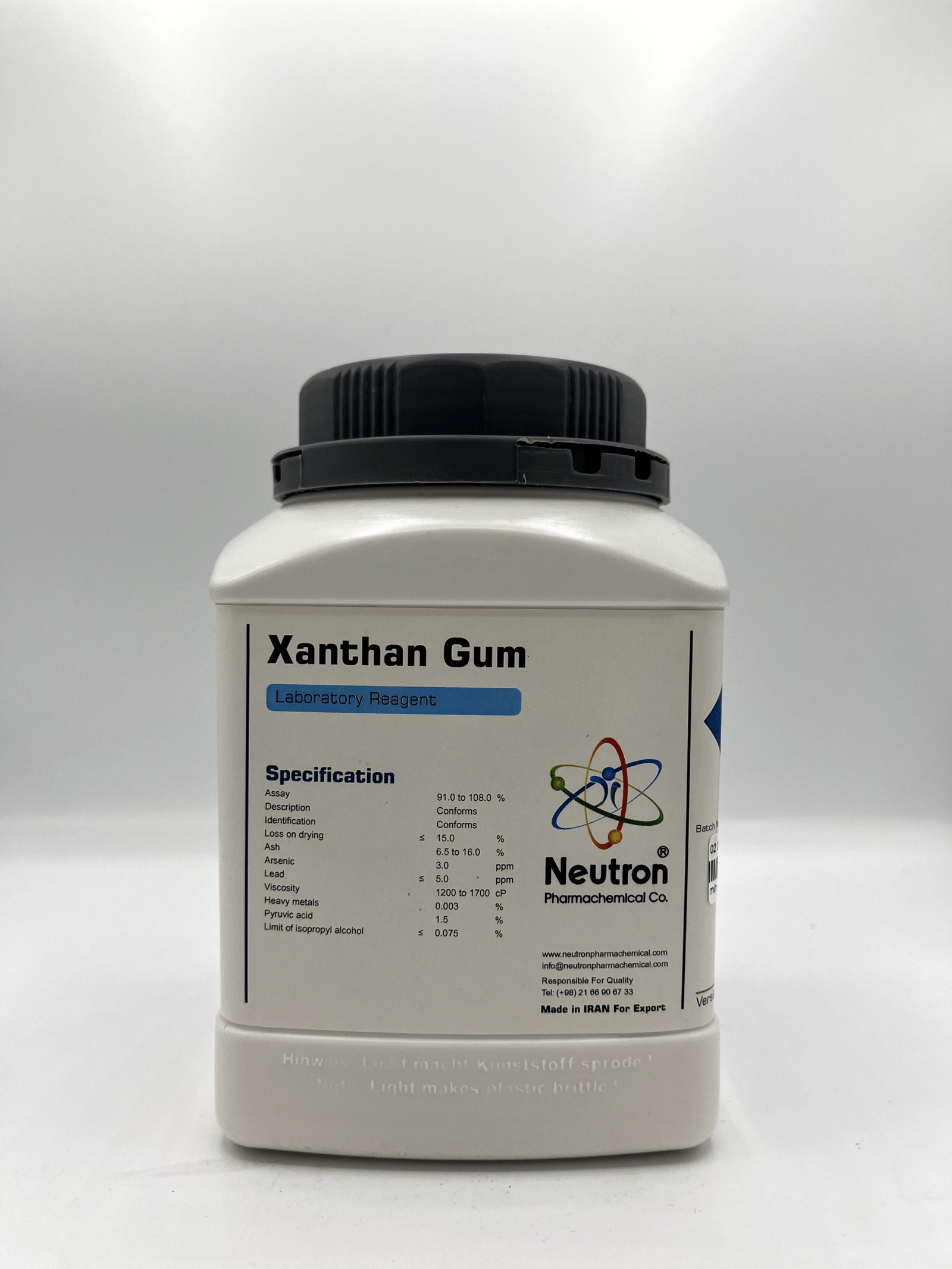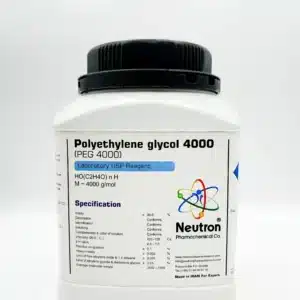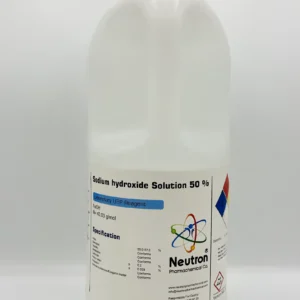زانتانگام
| Form | Powder |
| Assay | 91.0 to 108.0 | % | |
| Description | Conforms | ||
| Identification | Conforms | ||
| Loss on drying | ≤ | 15 | % |
| Ash | 6.5 to 16.0 | % | |
| Arsenic | 3 | ppm | |
| Lead | ≤ | 5 | ppm |
| Viscosity | 1200 to 1700 | cP | |
| Heavy metals | 0/003 | % | |
| Pyruvic acid | 1/5 | % | |
| Limit of isopropyl alcohol | ≤ | 0/075 | % |
Xanthan gum is a polysaccharide secreted by the bacterium Xanthomonas campestris during fermentation. It appears as a white to cream-colored powder that is odorless and tasteless. It dissolves easily in water, producing a viscous and stable solution. It is widely used as a food additive and thickening agent.
🏭⚗️ Production
Xanthan gum is produced by fermenting glucose or sucrose with Xanthomonas campestris. After fermentation, the polysaccharide is precipitated with isopropyl alcohol, dried, and ground into powder form.
🔬 Properties
Xanthan gum is highly soluble in water and can produce highly viscous solutions even at low concentrations. It remains stable over a wide range of temperatures and pH levels, and shows pseudoplastic behavior, meaning its viscosity decreases under shear stress.
🧪 Applications
• Food industry: Used as a thickener, stabilizer, and emulsifier in sauces, dressings, gluten-free products, and beverages.
• Pharmaceuticals: Used as a suspending agent and stabilizer in oral medications.
• Cosmetics: Used to stabilize emulsions and improve texture in creams and lotions.
• Industrial: Used in oil drilling fluids and as a lubricant.





